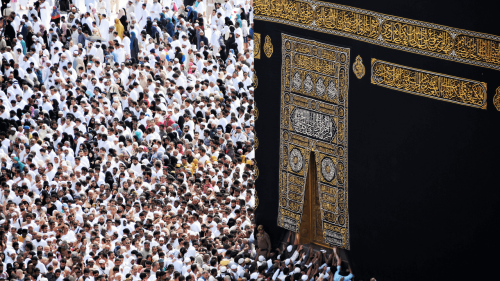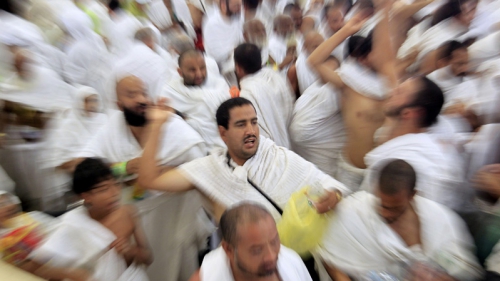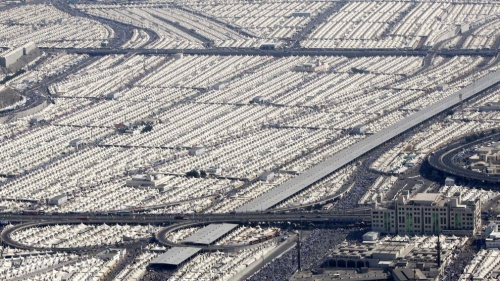Hajj: Step by step
|
1) Day One | 2) Day Two | 3) Day Three |
|
They are the framework of the Muslim life: faith, prayer, concern for the needy, self-purification, and the pilgrimage to Makkah for those who are able. Before the 8th of Dhul-Hijjah, a person who wants to perform pilgrimage (Hajj) pronounces the intention to perform Umrah while approaching the Miqat. A second intention for the actual Hajj is pronounced at a later period. There are several rites to properly complete the Hajj and Umrah. Additional Info The rites of Umrah and Hajj may include but are not limited to: In the case of Hajj at-Tamattu, after completing the Umrah, the pilgrim trims his/her hair, showers, and changes into everyday clothes. These steps complete the Umrah portion. All restrictions of the Ihram are temporarily lifted. The pilgrim waits until the 8th of Dhul-Hijjah to start the rites of Hajj. On the 8th of Dhul-Hijjah, the pilgrim pronounces a new niyyah at the place to perform Hajj. There is no need to go to Miqat for this. The pilgrim changes into Ihram in the prescribed manner and proceeds to Mina soon after the Fajr Prayers.
After leaving Mina, the pilgrim heads toward Arafah. Arafah is a desert location approximately nine miles from Makkah. Pilgrims don't have to get crowded on the Mount of Rahmah (Mountain of Mercy). They can stay in any place WITHIN the boundaries of Arafah.
Additional Info Prayer Upon Entering Arafah O Allah! Forgive my sins, help me repent to you, and grant me all that I beseech of You. Whenever I turn, let me see goodness. Allah be praised! All Praise is due to Allah! There is no deity except Allah! And Allah is The Most Great. Due to the large crowd going to Mina, the pilgrim must remain calm, avoid pushing people, and must be respectful to others.
Weak and sick people can appoint others to throw stones at the Jamrahs in Mina on behalf of them. 4) Day Four - Performing Prayers in Mina Back in Mina, the pilgrim performs all of the daily prayers, shortening the 4 Rak'ats prayers to 2 Rak'ats, but without combinig them.
Additional Info The minimum stay in Mina should exceed most of the night. Otherwise, the pilgrim is required to make a sacrifice. This is one of the best opportunities to acquire knowledge from the scholars on duty. w stones at the Jamrahs in Mina on behalf of them. 5) Day Five - Stoning the Jamarahs On the 12th of Thul-Hijjah, the same procedures as the 11th take place. The pilgrim stones the The first Jamrah, then the Middle, and finally the Big one in the same consecutive order, after midday on all three days. Additional Info Throwing on the 13th of Thul-Hijjah is optional. The pilgrim may return to Makkah after throwing pebbles on the 12th of Thul-Hijjah to perform Tawaf al-Wada (farewell circumambulation).
|






















